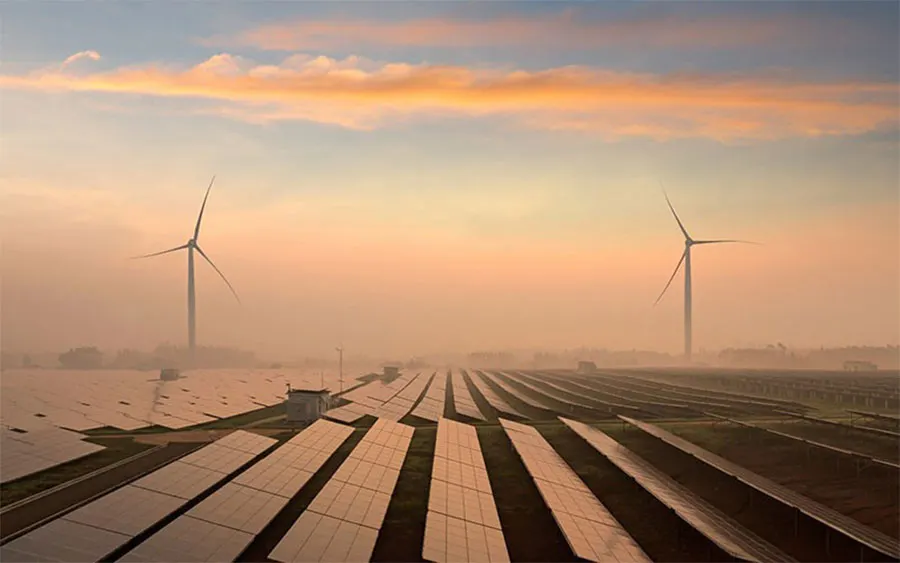First provincial auction results signal pricing pressure under marketisation shift, with solar prices falling 32% below current averages
LONDON/HOUSTON/SINGAPORE, 03 November 2025 – China added a record 264 Gigawatt (GW) of wind and solar capacity in the first half of 2025, doubling additions from the same period in 2024, as developers rushed to meet the deadline for inclusion in the country’s new auction-free renewable pricing mechanism, according to Wood Mackenzie.
First auction results under the new competitive framework indicate pricing pressure ahead, as noted in the report ‘Game Changer or Growing Pains for China’s Renewables? Analysis of China’s Renewables Sustainable Development Pricing Mechanism’. Shandong Province’s inaugural auction showed wind and solar prices falling 9% and 32% below average settlement prices respectively, highlighting the challenges developers will face under China’s shift toward full marketisation of renewable power.
Auction-free mechanism delivers strong returns
China launched the renewable sustainable development pricing mechanism in 2025, with projects built before 1 June 2025 enjoying auction-free mechanism pricing. The auction-free mechanism proved highly attractive to investors as it maintains incumbent off-taking terms and conditions, including pricing at coal-fired power base price (CBP) in most provinces and annual provincial generation coverage averaging 54% for 18 years.
“The auction-free mechanism appeals to investors because it provides long-term price certainty and favourable generation coverage, said Sharon Feng, senior analyst, China power market at Wood Mackenzie. “Average project internal rate of return for utility solar and onshore wind projects installed in H1 2025 could reach 8% and 11% respectively under this mechanism, supported by declining technology costs and the extensive 18-year execution period.”
Wood Mackenzie’s analysis shows onshore wind and utility solar levelized cost of energy (LCOE) fell 7% in 2025, further improving project economics for developers who secured auction-free mechanism access before the deadline.
New mechanism introduces price risk and shorter coverage periods
The mechanism for projects installed on or after 1 June 2025 features significantly different terms, with execution periods averaging just 10 years compared to 18 years under the auction-free structure. The bid price range falls below the pricing structure of the current project mechanism, demonstrating the government’s commitment to advancing renewable energy marketisation.
Wood Mackenzie projects utility solar IRR will fall to 6.3% in Shandong, for example, under the new mechanism, down from the national average 8% under the auction-free structure, while onshore wind IRR could reach 13.6%. The Shandong auction results provide the first real-world validation of these economic pressures.
“The Shandong results provide an early indication of pricing dynamics under the new competitive framework,” Feng noted. “Investors will be exposed to price fluctuation risk and curtailment losses due to incomplete lifecycle coverage under the shorter execution periods.”
Curtailment risks vary significantly by technology and region
Curtailment will pose a major risk to income stability alongside power price fluctuations. Wood Mackenzie forecasts that average wind and solar curtailment rates will exceed 5% in seven and 21 provinces respectively during the next 10-year period, creating additional investment considerations for developers.
Engagement with the new mechanism is discretionary and contingent upon investor risk tolerance levels. “Provinces with high curtailment rates and volatile power prices will face challenges attracting investment under the new mechanism structure,” Feng added. “Developers need to carefully evaluate provincial grid conditions and long-term price projections when making investment decisions.”
Wind will attract more investment on superior economics?
Meeting China’s 2026 government target of 24% non-hydro renewable energy consumption of power demand requires an additional 741 TWh to reach 2,573 TWh of wind and solar generation from 18% in 2024. This will drive wind and solar capacity additions exceeding 750 GW across 2025 and 2026.
Wind may attract more investment than before due to better economics and lower curtailment risks, as 10-year average capture prices will exceed Wood Mackenzie’s 2025 LCOE by RMB 67/MWh, providing investors greater opportunity to secure profit margins.
Utility solar faces more significant challenges, with average 10-year capture prices trailing onshore wind by 43%, while two-thirds of provinces will experience curtailment exceeding 5%. Distributed solar participation may be restricted in provinces with grid connection limitations and faces disadvantages against utility solar in mechanism auctions due to higher LCOE.
“Wind will be the preferred technology for many investors given the superior economics and lower curtailment risks, but its development is more time-consuming and constrained by environmental resources.” said Feng. “The pricing mechanism evolution reflects China’s broader energy transition strategy, but success will depend on managing grid integration challenges and maintaining investor confidence. After the breakneck addition of 264 GW of wind and solar in the first 6 months, the renewable development will switch to a more sustainable growth pattern, focusing on quality over quantity, which is the key tone of the 15th Five Year Plan.”
“Join the companies that smart energy professionals follow – because when you’re featured on OGV, the industry pays attention.”















